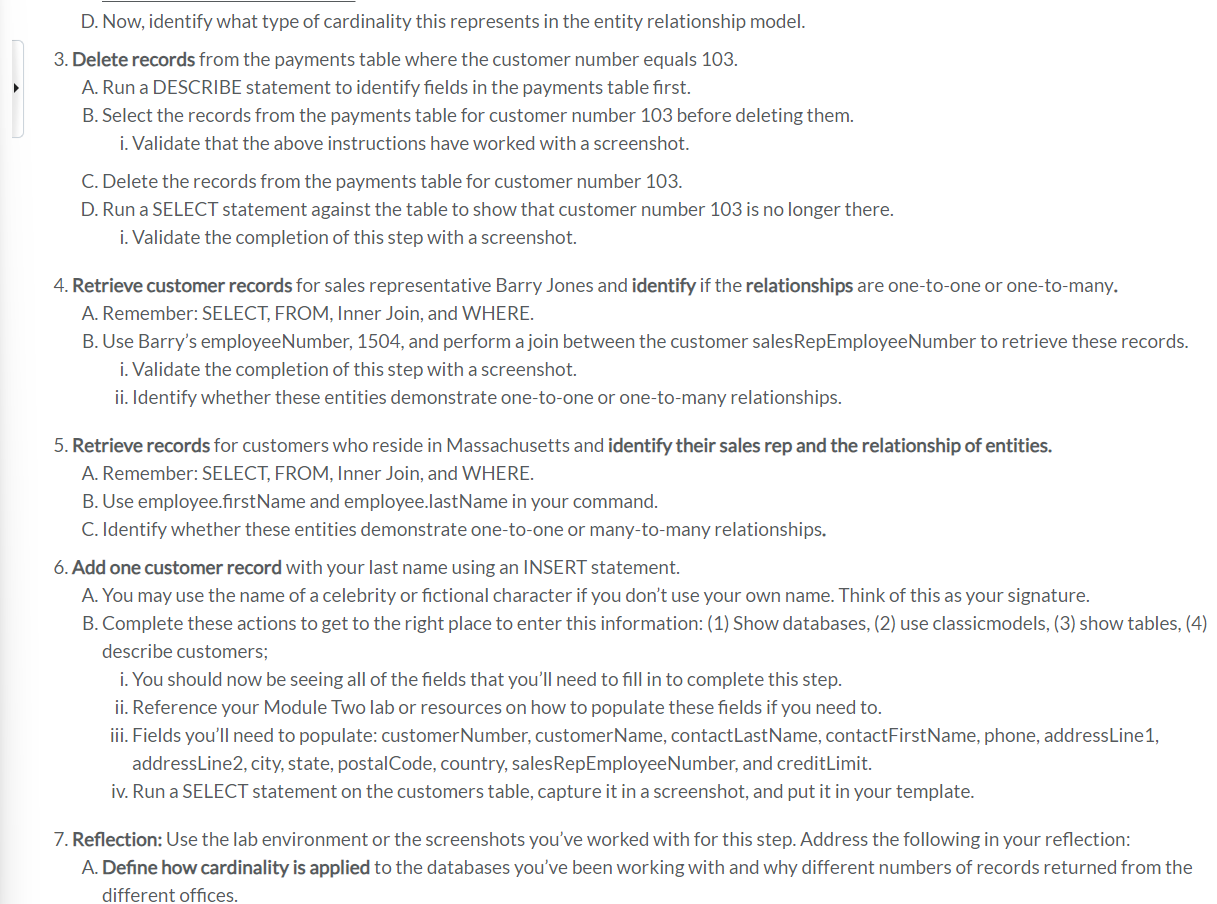Answered step by step
Verified Expert Solution
Question
1 Approved Answer
D . Now, identify what type of cardinality this represents in the entity relationship model. Delete records from the payments table where the customer number
D Now, identify what type of cardinality this represents in the entity relationship model.
Delete records from the payments table where the customer number equals
A Run a DESCRIBE statement to identify fields in the payments table first.
B Select the records from the payments table for customer number before deleting them.
i Validate that the above instructions have worked with a screenshot.
C Delete the records from the payments table for customer number
D Run a SELECT statement against the table to show that customer number is no longer there.
i Validate the completion of this step with a screenshot.
Retrieve customer records for sales representative Barry Jones and identify if the relationships are onetoone or onetomany.
A Remember: SELECT, FROM, Inner Join, and WHERE.
B Use Barry's employeeNumber, and perform a join between the customer salesRepEmployeeNumber to retrieve these records.
i Validate the completion of this step with a screenshot.
ii Identify whether these entities demonstrate onetoone or onetomany relationships.
Retrieve records for customers who reside in Massachusetts and identify their sales rep and the relationship of entities.
A Remember: SELECT, FROM, Inner Join, and WHERE.
B Use employee.firstName and employee.lastName in your command.
C Identify whether these entities demonstrate onetoone or manytomany relationships.
Add one customer record with your last name using an INSERT statement.
A You may use the name of a celebrity or fictional character if you don't use your own name. Think of this as your signature.
B Complete these actions to get to the right place to enter this information: Show databases, use classicmodels, show tables,
describe customers;
i You should now be seeing all of the fields that you'll need to fill in to complete this step.
ii Reference your Module Two lab or resources on how to populate these fields if you need to
iii. Fields you'll need to populate: customerNumber, customerName, contactLastName, contactFirstName, phone, addressLine
addressLine city, state, postalCode, country, salesRepEmployeeNumber, and creditLimit.
iv Run a SELECT statement on the customers table, capture it in a screenshot, and put it in your template.
Reflection: Use the lab environment or the screenshots you've worked with for this step. Address the following in your reflection:
A Define how cardinality is applied to the databases you've been working with and why different numbers of records returned from the
different offices.

Step by Step Solution
There are 3 Steps involved in it
Step: 1

Get Instant Access to Expert-Tailored Solutions
See step-by-step solutions with expert insights and AI powered tools for academic success
Step: 2

Step: 3

Ace Your Homework with AI
Get the answers you need in no time with our AI-driven, step-by-step assistance
Get Started


